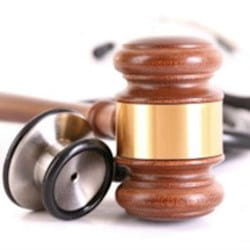EACH YEAR around 282,000 patient falls are reported to the National Patient Safety Agency from hospitals and mental health units in England and Wales. Over 96 per cent of these result only in minor injury or no significant harm but patient falls still account for 1,390 fractures (840 hip fractures) and 30 intracranial injuries (mostly subdural haematomas) reported per year. The true figure is likely to be much higher due to under-reporting.
These figures are cited in a Rapid Response Report (RRR) issued by the NPSA in January of this year. It also included analysis of patient safety incidents logged by the National Reporting and Learning System over a 12-month period indicating that around 200 patients with fractures or intracranial injury after a fall in hospital experienced some failure of aftercare. These included:
- delayed diagnosis of fractures, ranging from several hours to several days after the fall
- neurological observations not recorded at all or recorded at inadequate intervals, resulting in delayed diagnosis of intracranial bleeding
- sling hoists used to move patients despite signs or symptoms of limb fracture or spinal injury
- delays in access to urgent investigations or surgery.
Patient injuries due to falls can and do occur in any medical or dental setting but in-patients are particularly vulnerable having more acute medical problems such as delirium, stroke, systemic infections or cardiovascular and musculoskeletal conditions. Medication side-effects such as dizziness and incontinence can also make hospital patients more prone to falls.
In the report the NPSA states: "When a serious injury occurs as a result of an in-patient fall, safe manual handling and prompt assessment and treatment is critical to the patient’s chances of making a full recovery."
It stresses the importance of ensuring that local protocols and systems are in place to help staff to consistently achieve this. A recent BMJ article highlighted the advice given in the RRR and the need for all healthcare staff to be vigilant when a patient takes a fall. Among key clinical considerations the authors advised:
- Before moving a patient off the floor always consider the possibility of serious injury and check for signs or symptoms of limb fracture or potential spinal injury.
- Know how to access and use "flat lifting" equipment in patients with a suspected injury or call for help from colleagues trained in its use, or keep the patient immobile while awaiting emergency services.
- Ensure that all patients with features of serious injury are rapidly assessed by a doctor.
- Ensure all such patients receive a detailed and documented medical review within an appropriate timescale and with regular monitoring and further review at the next ward round.
- Suspected head injuries require neurological observation based on national clinical guidelines (NICE) with abnormal findings such as lateralising signs, seizures, or a drop in the Glasgow coma score triggering prompt action.
- Document a full history of the fall including witness statements and report and investigate via local systems informing relatives and carers where applicable.
- Assume that a patient who falls is at high risk of further falls, triggering action on secondary prevention and consideration of bone health.
- Note that falls are often an ominous "red flag" for underlying deterioration, which may itself merit urgent medical review regardless of any actual injury.
Nothing can prevent some patients from stumbling or fainting in hospital or in medical or dental practice premises but taking account of the issues highlighted in the NPSA report should mitigate clinical and legal risks for all healthcare professionals.
ACTION Take care with patient falls both in the immediate response and follow-up and ensure proper emergency protocols are in place.
This page was correct at the time of publication. Any guidance is intended as general guidance for members only. If you are a member and need specific advice relating to your own circumstances, please contact one of our advisers.
Save this article
Save this article to a list of favourite articles which members can access in their account.
Save to library

